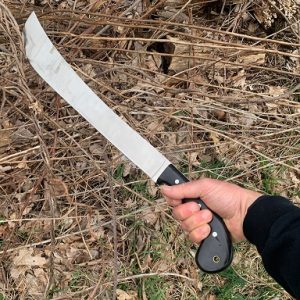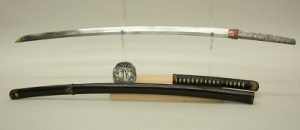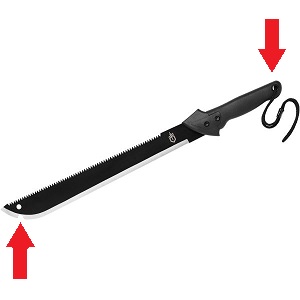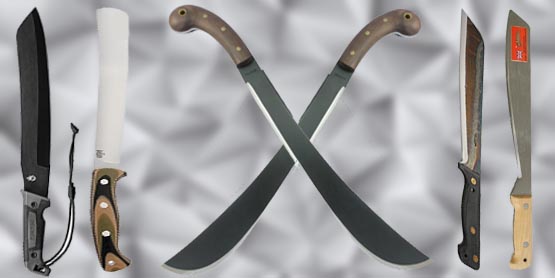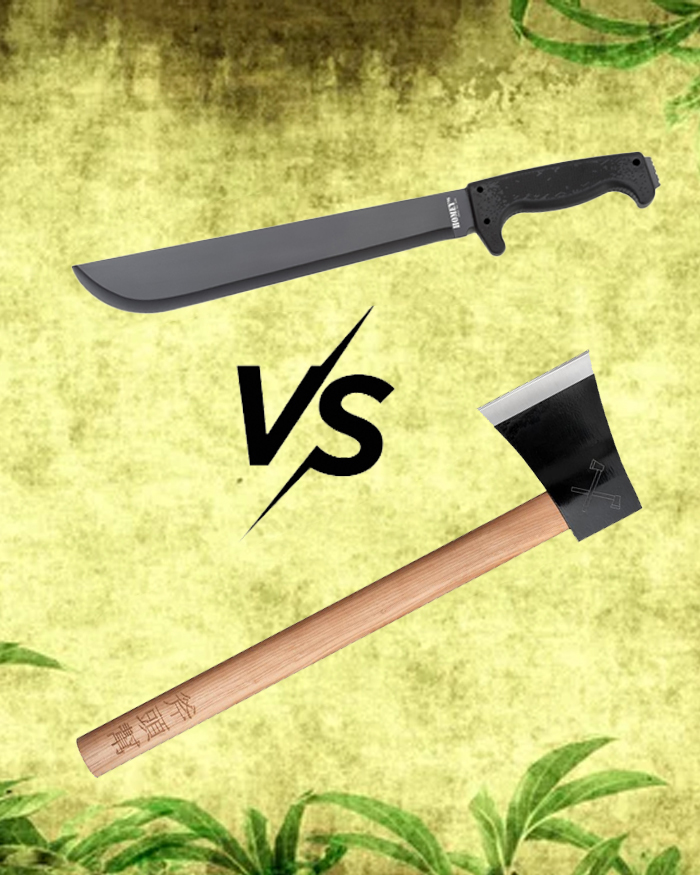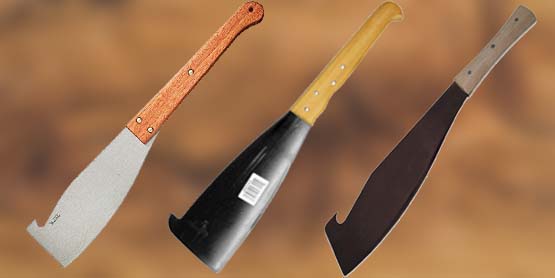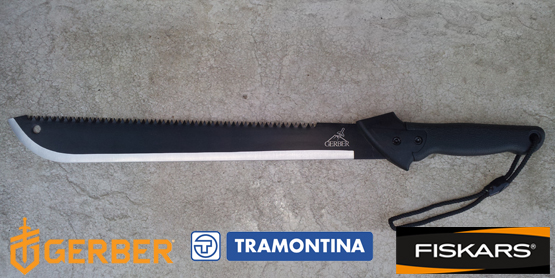Machete vs Katana – the Clash of the Blades
Nevertheless, practically speaking, the dispute between a machete and a katana isn’t only about which one looks meaner and cooler (aesthetics, after all, won’t matter when it comes to a weapon beyond decoration and symbolism). When determining which weapon best meets your needs such as Machete vs Katana, you must carefully consider the features, applications, and limitations.
Table of Contents
What is a Machete?
Machete Features
Machete Blades
Machete blades range in length from 10 to 28 inches, with an average of 14 inches.
Machete Blade Thickness
The blade thickness of the machete varies from type to type. Even within a single type, it falls between 1/8th and 3/8th of an inch.
Blade Tip
To enable heavy-duty cutting, most machetes feature a blunt tip that can also be thicker (a forward-weighted blade).
Blade Material
Stainless steel, carbon or high carbon steel, or both may be used to make machete blades (which are the cheapest and least reliable).
Handle
A machete’s handle, which can be made of ivory, plastic, rubber, wood, and Micarta, won’t typically give much protection to the user. The type of material chosen affects the grip quality, with Micarta providing the best grip for the longest time.
Profile
Machete blades often have a wide gap between their edges, which can be sharpened. Both a uniform and a forward-weighted weight distribution are possible for the blade.
Price
Machete costs often don’t exceed $200 due to their straightforward production process (for the highest quality ones). A dependable, useful machete in the sub-$100 range is not hard to come by.
Machete Uses
A machete’s rugged and durable build makes it ideal for chopping and hacking tasks that require more force than accuracy. The thick, short blades produce strong strokes that, if necessary, can cleave through flesh and bones and tough, dense plant growth. The machete’s design makes it perfect for survival when you need an easy-to-use utility blade or a straightforward self-defense weapon.
What is a Katana?
Katana Features
Blade Length
The length of a katana can range from 23.5 to 28.5 inches, depending on the era in which it was made.
Blade Thickness
The Katana’s blade is typically around a quarter inch thick at the blunt edge, tapering down to the sharp edge after initially being flat on both sides of the blade for a portion of the distance.
Blade Tip
The Katana has a variety of blade tips, all curved and culminating in a sharpened point, making them perfect for quick stabbing and piercing.
Handle
The Katana’s handle, or tsuka, is long to allow for the dual-handed grip necessary to use it. It is traditionally known as the “tsuka ito” and is wrapped with ribbons made of cotton, synthetic/genuine leather, artificial/natural suede, or silk to improve its grip.
Blade Shape
Compared to other swords, the Katana’s blade is relatively short and mildly curved, in contrast to the tachi, the Japanese sword it descended from, which had a more prominent curve. The hamon or characteristic line that runs down both sides of the katana blade is present. Every master smith will have a unique hamon style, and every Katana will have a distinctive hamon.
Price
A katana costs anywhere between $30 and $3000. It will be challenging to get a functional katana for less than $100. Most katanas in this price range are decorative at best and made of stainless steel. You’ll need to spend at least $200 on a functional katana, which won’t be the best or most durable. You should be prepared to spend roughly $2000 to get an authentic nihonto katana, as these swords are hand-forged by a skilled smith in Japan.
Katana Uses
Western historians have also confirmed that the Katana’s rapid cutting action, which made it lethal in combat, is the reason it first gained popularity. Finding a better cutting blade than the Katana today is still challenging. The Katana’s tip is particularly practical for cutting, piercing, and stabbing techniques.
As a result, it is utilized in various martial arts techniques, such as battojutsu, kendo, kenjutsu, ninjutsu, and others. The Katana’s superior cutting ability makes it ideal for use in the backyard, where you may use it to trim, brush and clean grass.
Is Machete Similar to the Katana?
The similarities between a Machete and a Katana reside in the fact that both instruments in question are bladed weapons that can be used in hand-to-hand combat and in self-defense. Furthermore, in theory, both blades can slice up things like vegetation, bamboo, and certain crops. However, this isn’t the intended use for a katana.
What is the Difference Between a Machete and a Katana?
Due to their small blade length, machetes are quick and straightforward to use in combat scenarios, yet, this same trait also implies that you must approach your opponent very close to land a blow.
Most machetes are useless as piercing weapons due to their blunt tips, but there are some outliers, such as the tanto-style machete, which is incidentally modeled after a sort of knife used by samurai.
Due to Katana’s length and distinctive design, proficient usage of one needs training and practice. Because of its length and two-handed hold, you can’t wield the Katana for extended periods outside to remove dense vegetation and chop wooden branches.
Although its blade is undoubtedly thick and composed of sturdy, tempered carbon steel, its v-taper can cause irreversible damage if you use it for tough tasks like cutting wood. The Katana needs to be handled, kept, and maintained regularly.
This means that to preserve the integrity of its edge, you must store it in its sheath horizontally, with its curve facing down and its edge facing above. You’ll also need to oil, polish, and powder to reduce rusting.
Final Words
Katanas were once superb melee weapons with cutting and slicing abilities that were difficult to match. Like most other swords, Katanas have outlived their usefulness in active fighting or self-defense with the invention of firearms, though. They are worthless for practical self-defense because they are difficult to use—except in highly specialized circumstances—due to their long blades and two-handed grip. On the other hand, machetes are short, simple to use, and relatively powerful; as a result, they are appropriate for practically any close-quarters fighting situation you may encounter.
Frequently Asked Questions (FAQs)
- Is a Katana or Machete Better for the Forest?
Katana is the best forest option due to its faster and stronger nature than the machete.
- Is Katana Heavyweight?
Katana has an average weight of 1.1 to 1.5 kg with approximately 23.62 to 31.5 inches curved, single-edged blade.
- Are Machetes Good for Fighting?
Machete is an excellent tool for self-defense and fighting due to its sharp blade, firm grip, and large swings.

